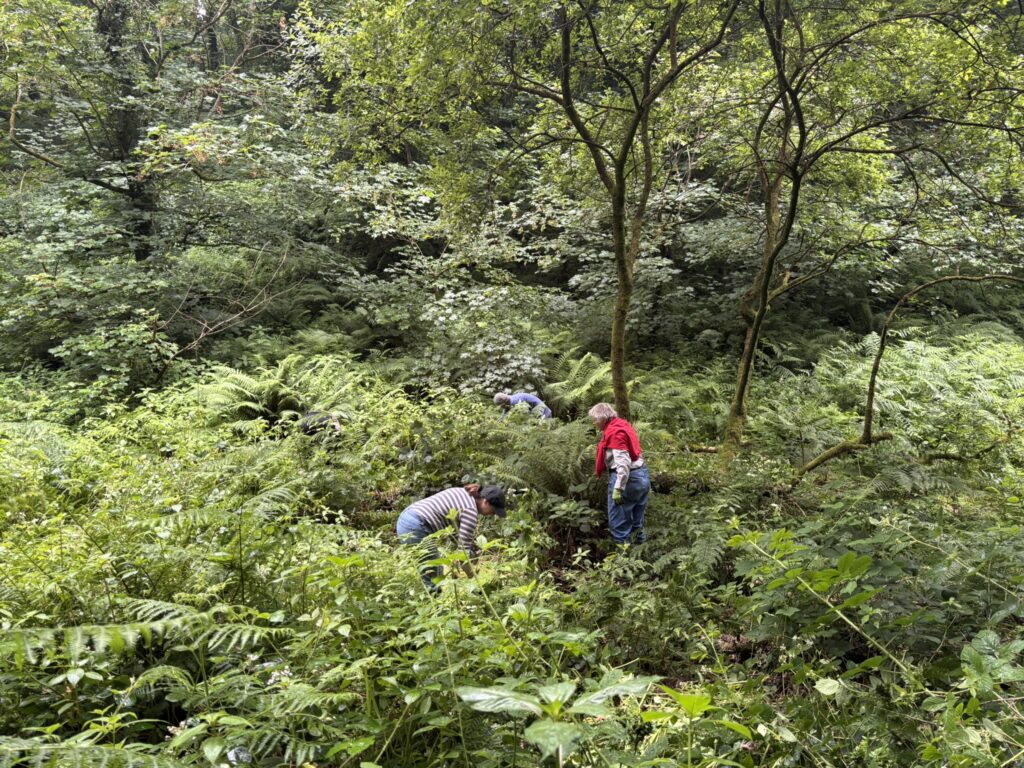Himalayan Balsam
A small team of intrepid and very dedicated members have been out pulling literally thousands of Himalayan Balsam plants in the Vale, at Pattards and Tosberry as well as isolated stands in other areas over the last few weeks. The plants are now setting seed, so pulling them up is no longer a good idea. However, because they are annuals, we will be out again next year. What has been achieved so far will make a real difference and cause a significant reduction in plants over time. WELL DONE THE BALSAM GANG!

Like Japanese knotweed, Himalayan balsam is an invasive plant, which tolerates low light levels and often shades out other vegetation, killing off native grasses and plants.
It’s important to familiarise yourself with this plant because it has a fierce spreading habit, and each stem can produce up to 800 seeds. Between June and October, Himalayan balsam produces clusters of purplish pink, helmet-shaped flowers which are then followed by seed pods that open explosively when ripe. These are dispersed widely as the ripe seedpods shoot their seeds up to 7 metres away – and are then often carried downstream where they reach the banks and spread the plant further.

There are many sites in Hartland Peninsula where Balsam is out of control. A group of HNS members met many times during the early summer to pull up balsam before the seed pods developed
A detailed sheet on how to identify Himalayan balsam can be found here.
We plan more pulling sessions this summer and will alert you closer to the time

